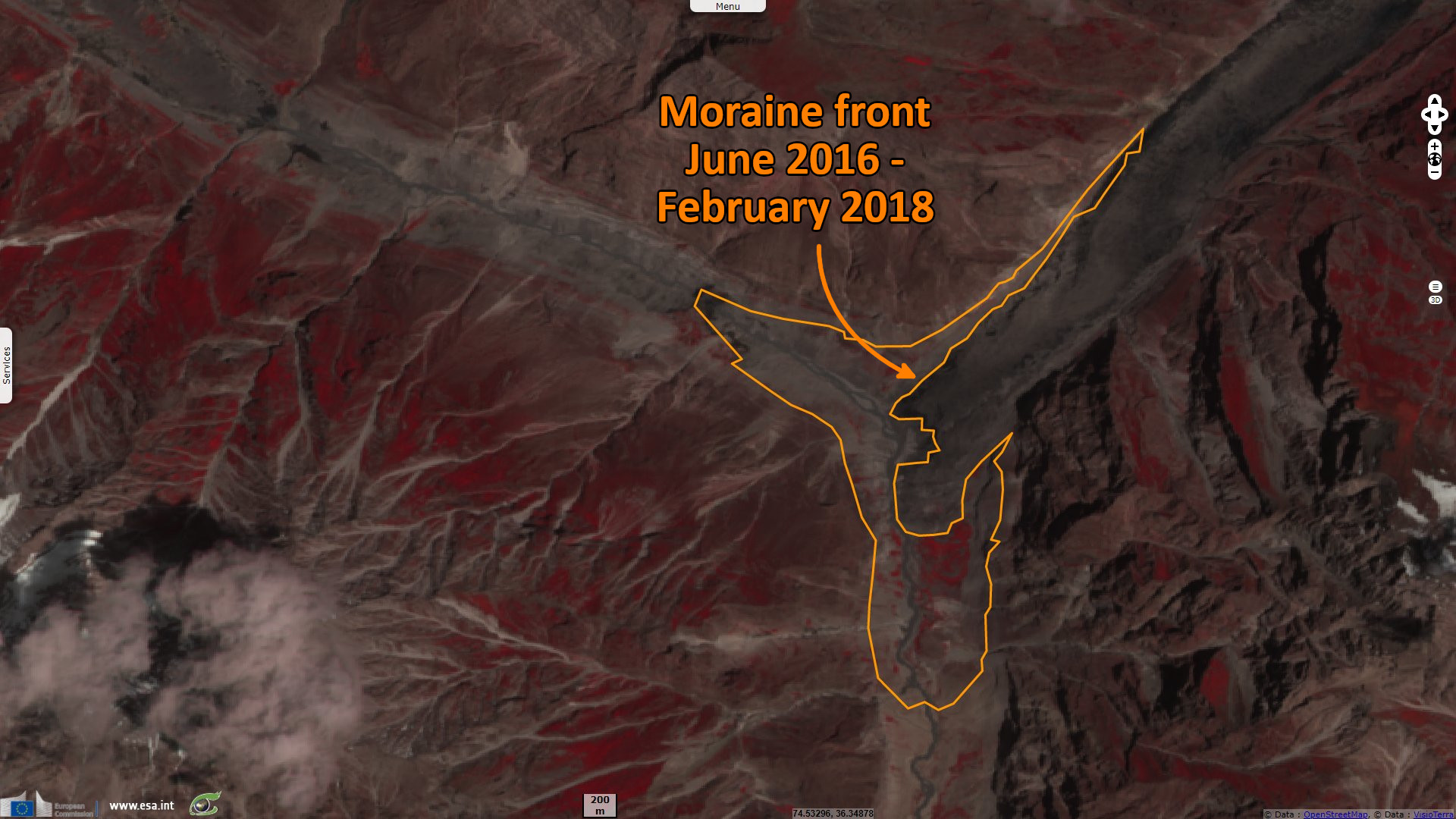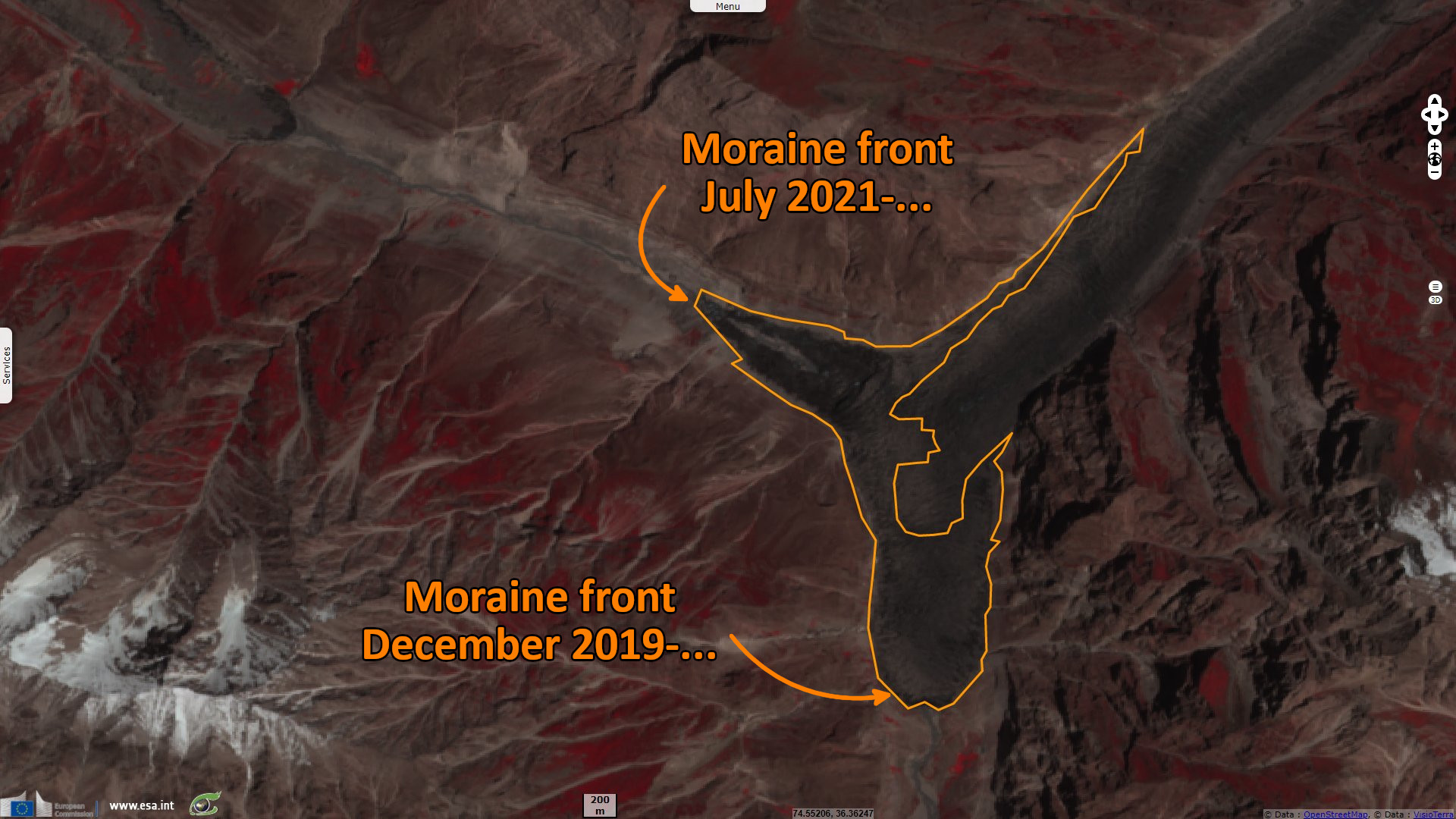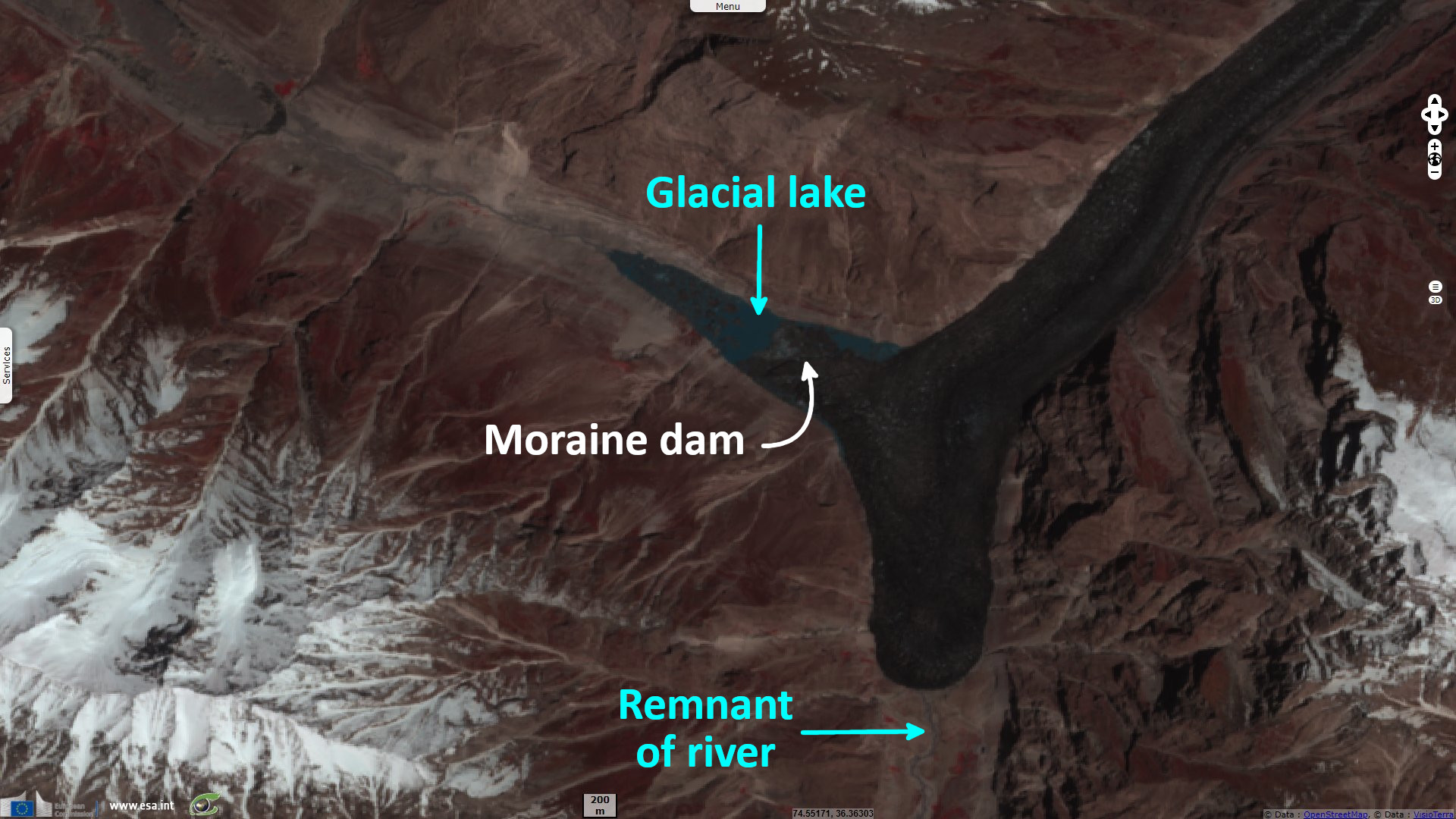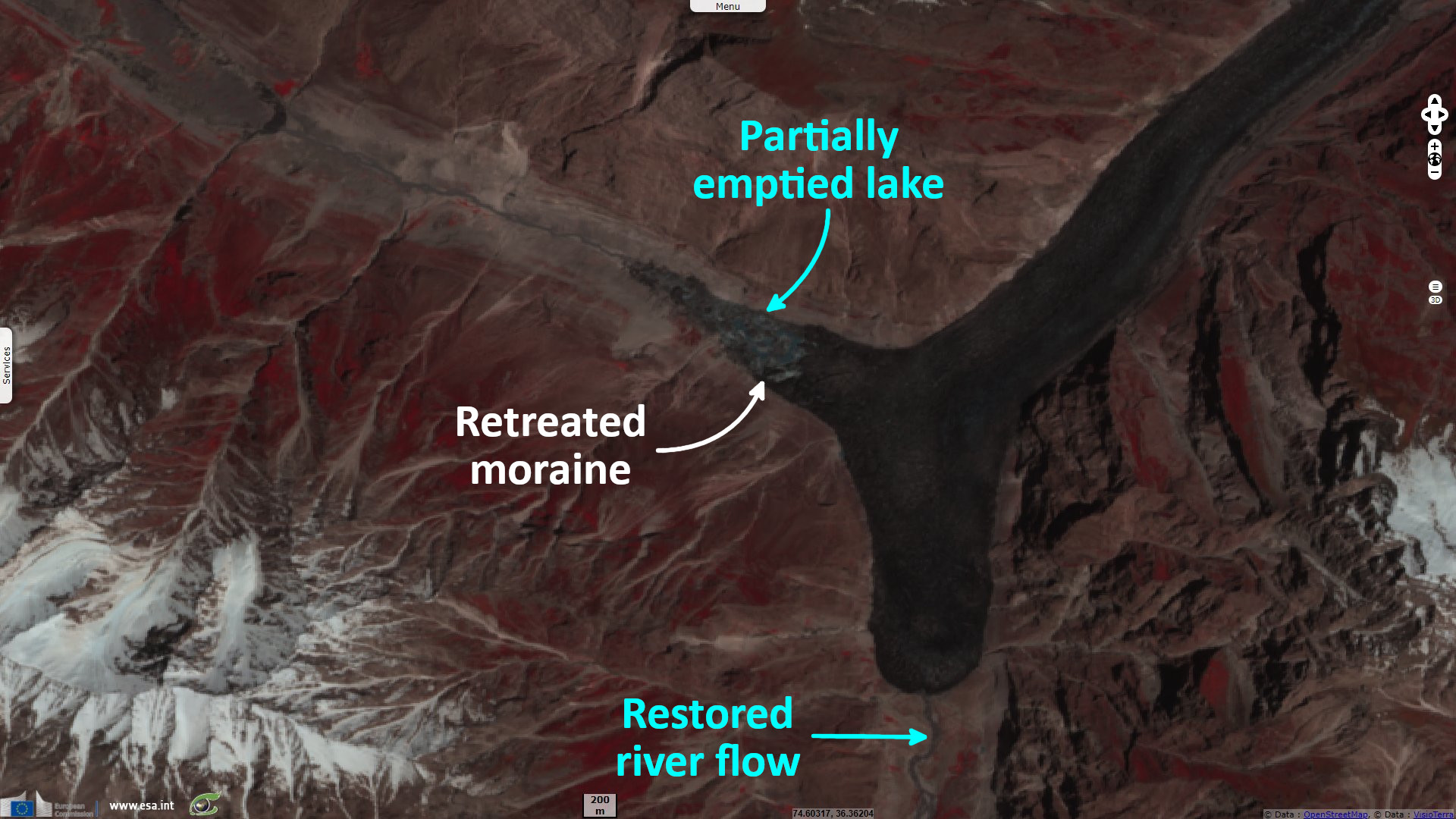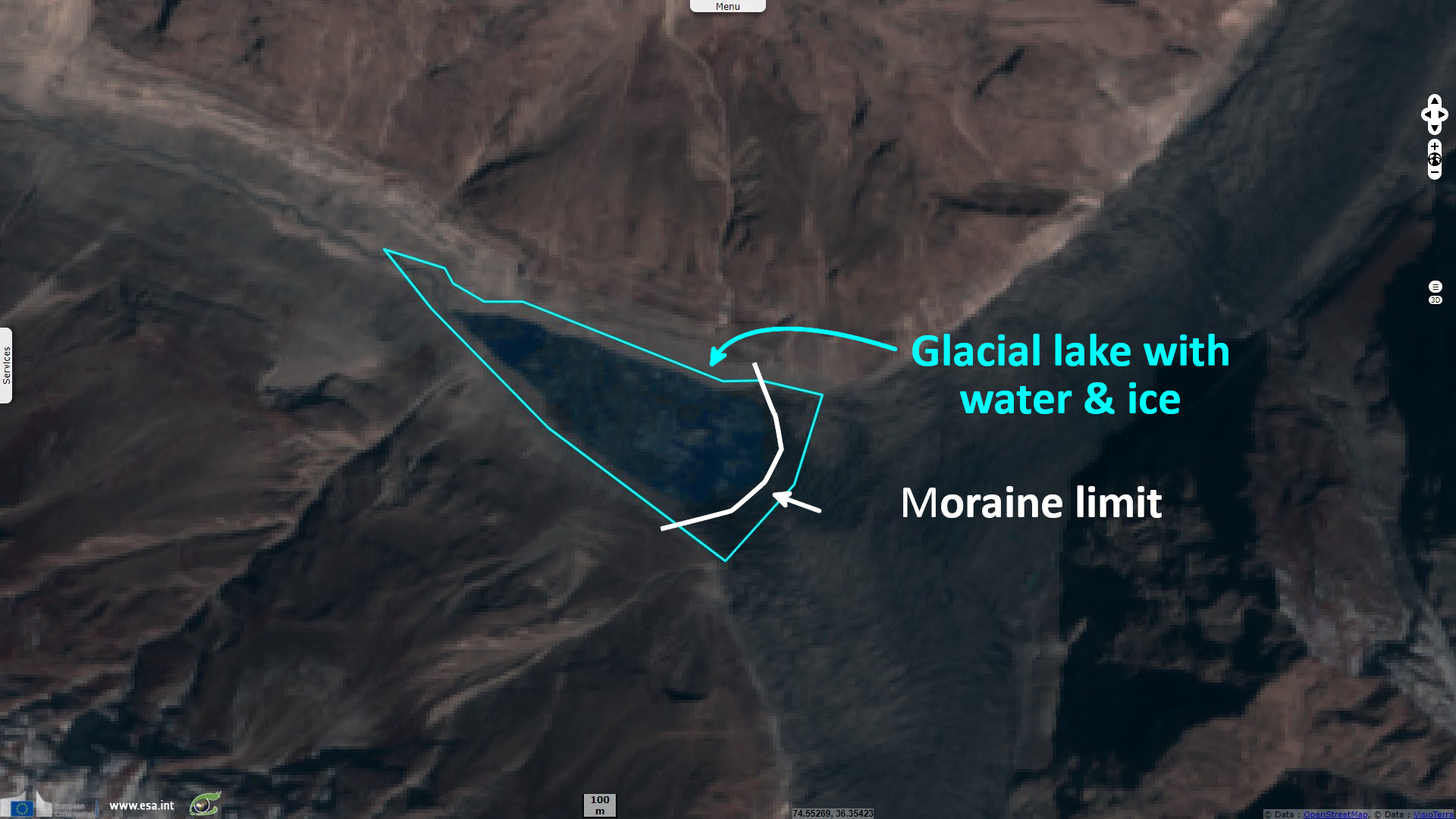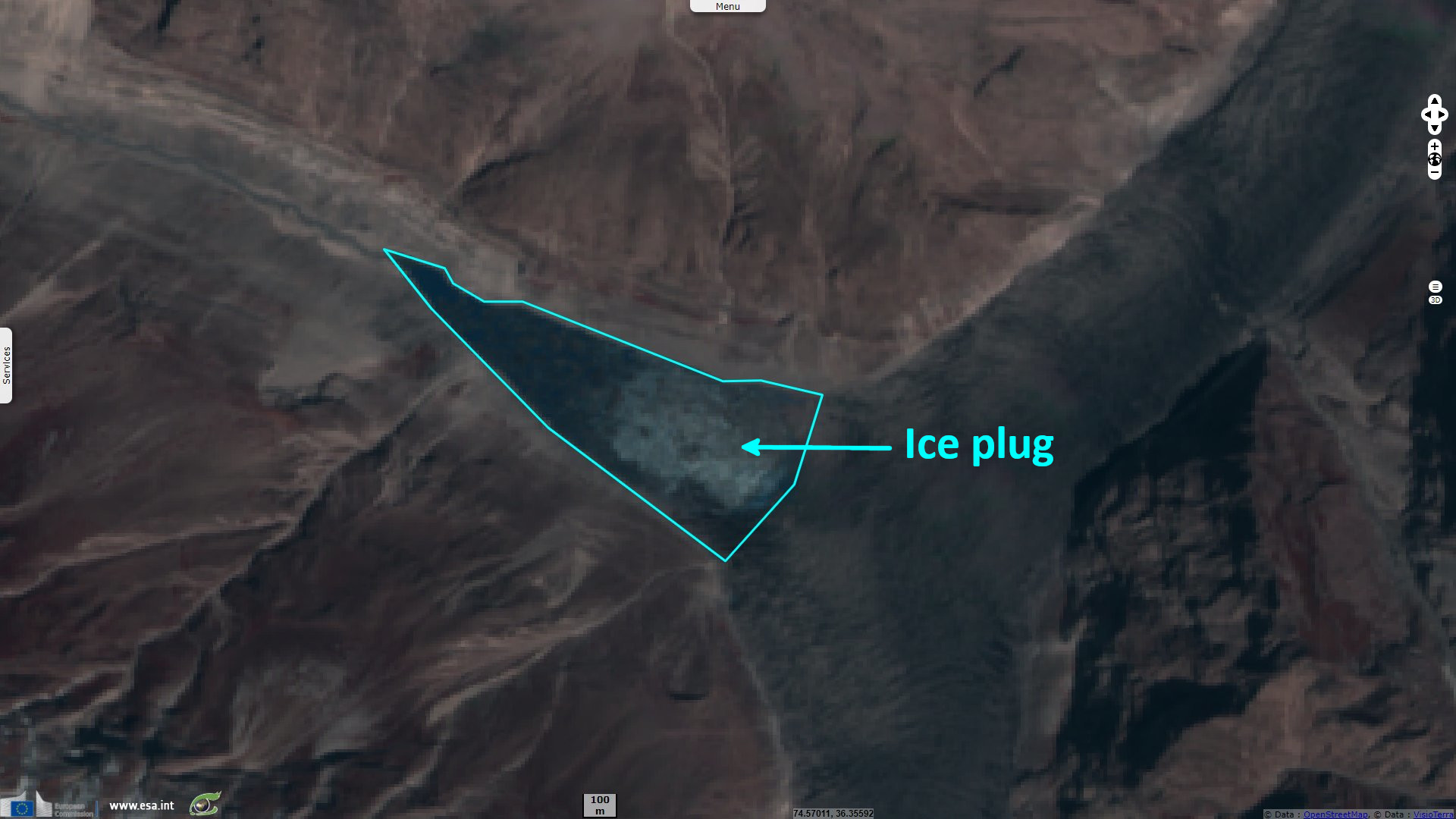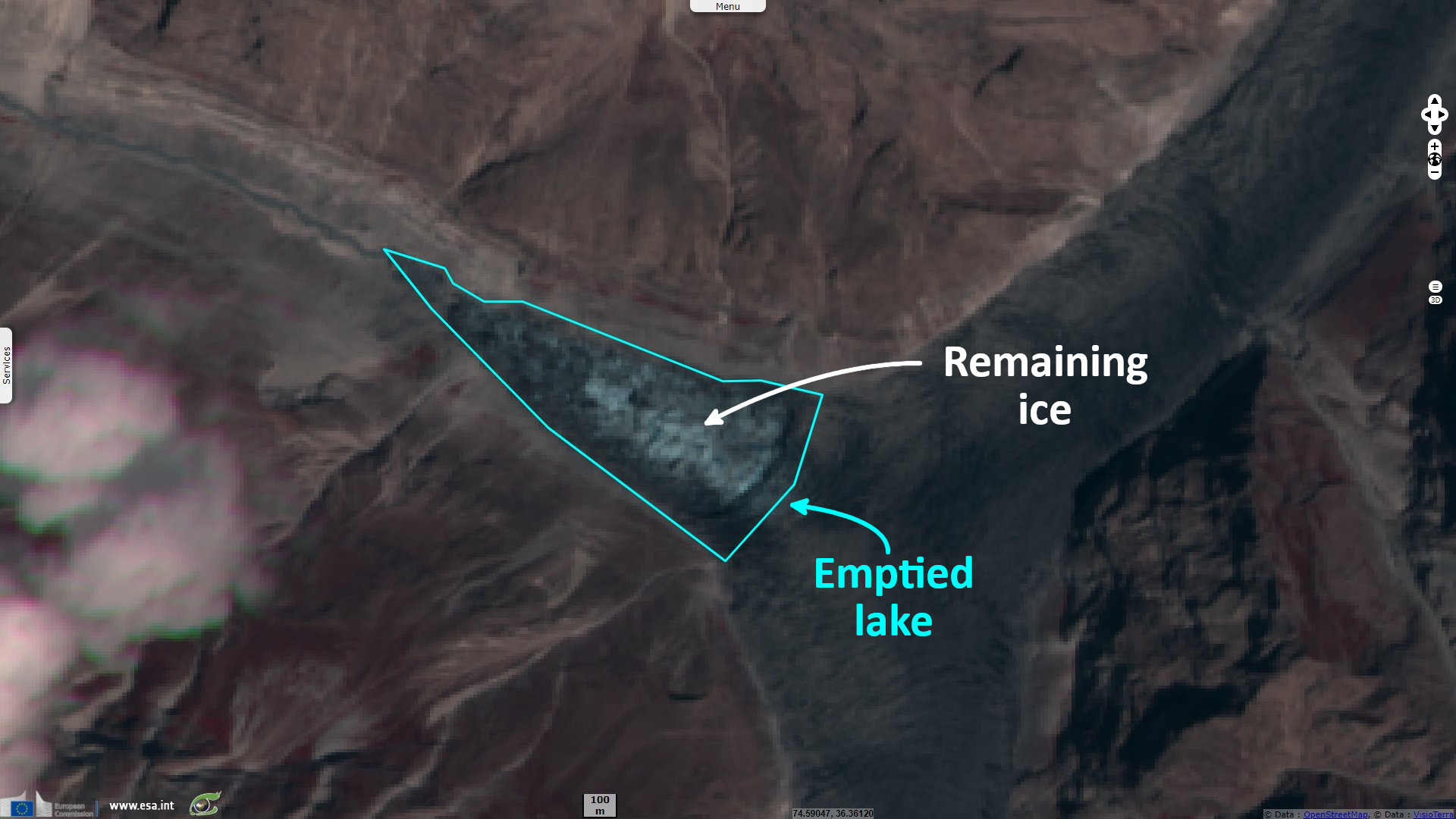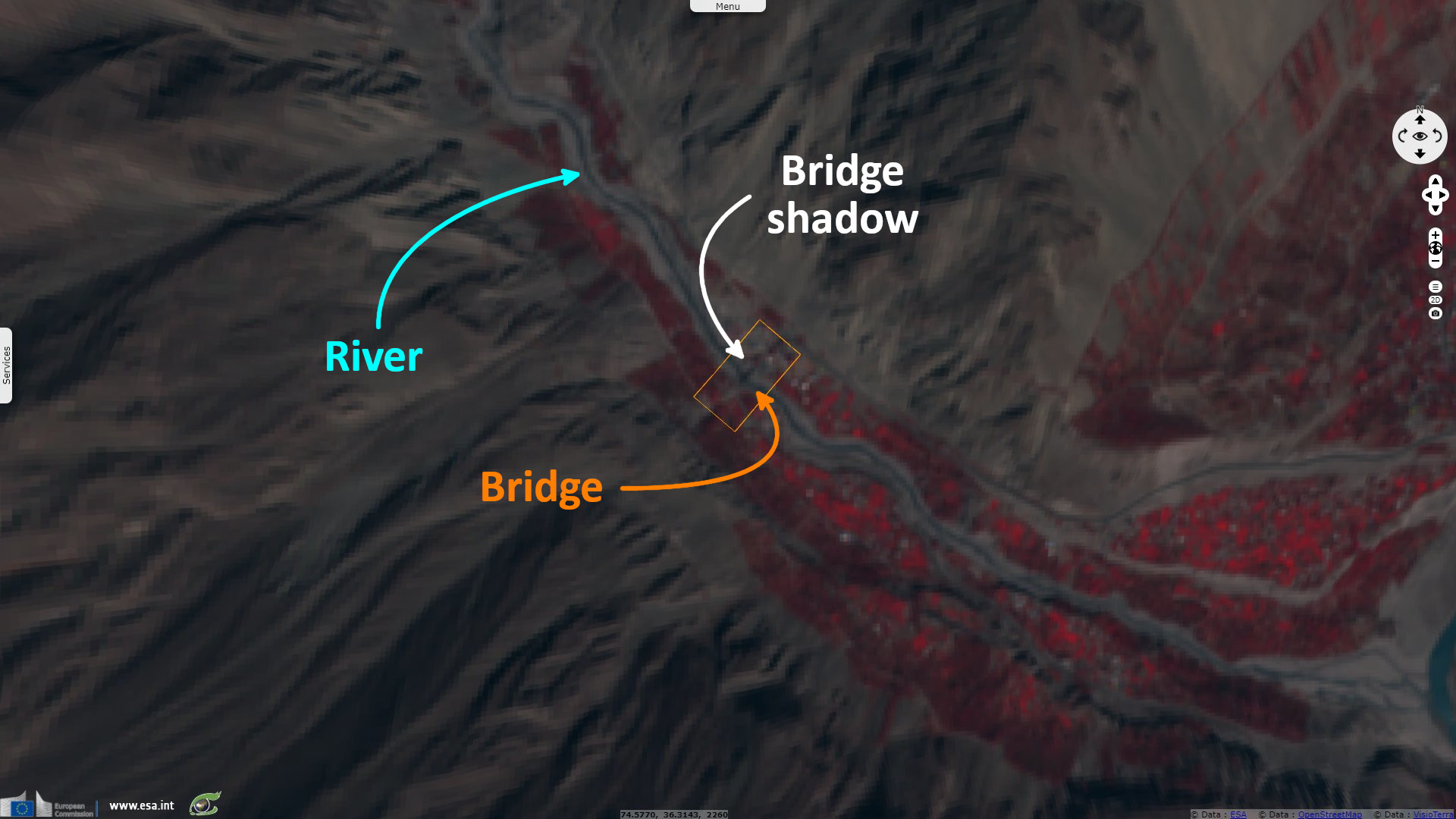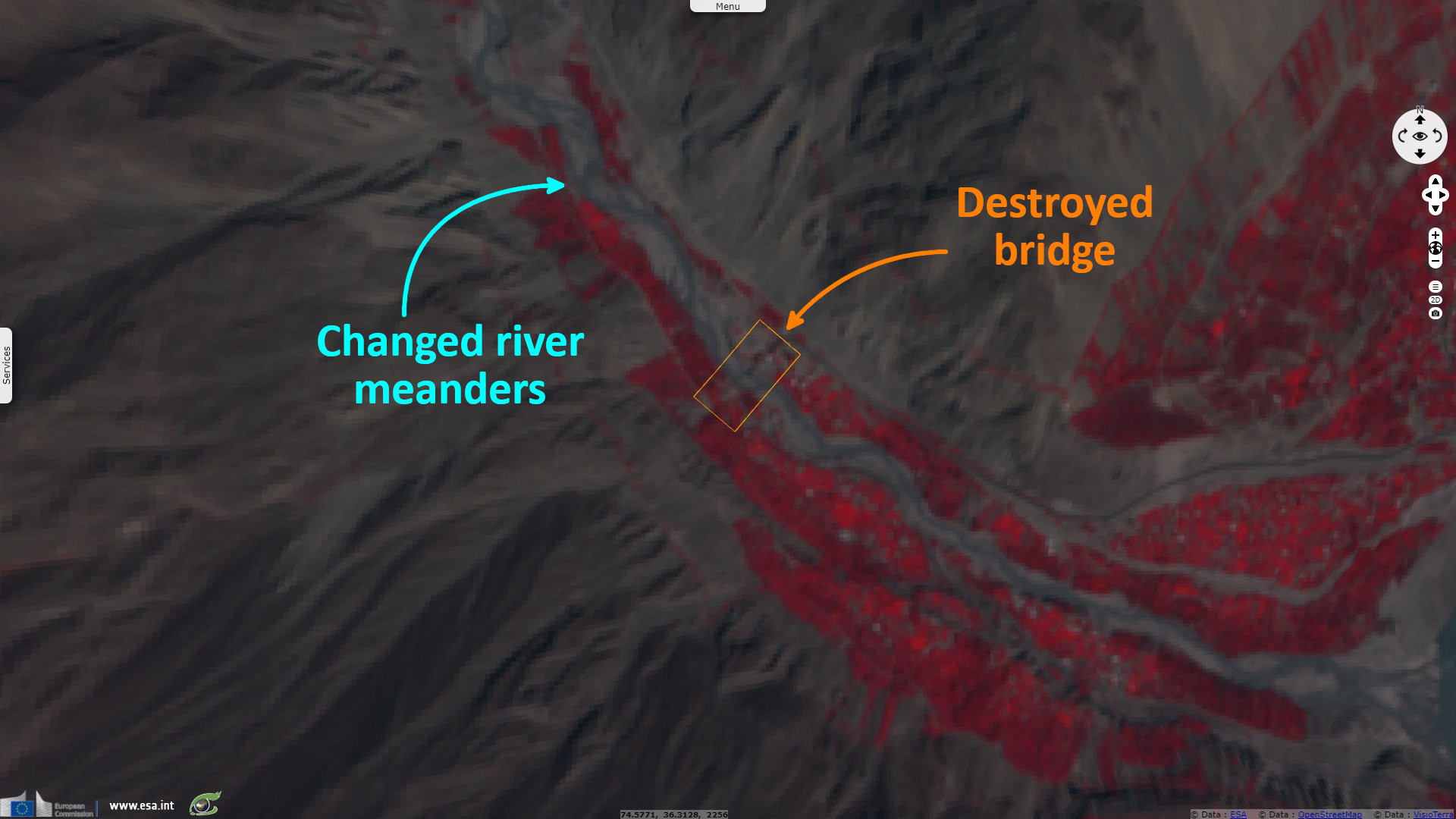Fast glacial surge and glacial lake outburst flood of Shishper, Karakoram, Pakistan
Sentinel-2 MSI acquired on 30 June 2016 at 05:46:42 UTC
...
Sentinel-2 MSI acquired on 05 February 2018 at 05:50:19 UTC
Sentinel-2 MSI acquired on 05 April 2022 at 05:46:39 UTC
Sentinel-2 MSI acquired on 10 May 2022 at 05:46:41 UTC
...
Sentinel-2 MSI acquired on 05 February 2018 at 05:50:19 UTC
Sentinel-2 MSI acquired on 05 April 2022 at 05:46:39 UTC
Sentinel-2 MSI acquired on 10 May 2022 at 05:46:41 UTC
Keyword(s): Land, mountain range, river, ice, glacial lake, emergency, infrastructure, Hydrology, Pakistan, Karakoram
"The Karakoram mountains of Pakistan, India, Afghanistan, and China contain some of the largest non-polar glaciers in the world, with nine glaciers >50 km in length. These ice masses exist at high altitude (2500–8600 m above sea level [a.s.l.]), and provide a crucial source of water for nearby communities. A sound understanding of the dynamics and recent variations of these glaciers is important for evaluating whether changes in their terminus position are driven by factors such as external climate forcing or internal ice dynamics (Yde and Paasche, 2010). Previous studies have indicated that there are many surge-type glaciers in the Karakoram", wrote Luke Copland in his article Expanded and Recently Increased Glacier Surging in the Karakoram published on 19 Jan 2018.
In the 2020 publication, Glacier hazard associated with surging glaciers – story of the Shishper Glacier from Hunza, Pakistan, D. Karim explains the glacial surge phenomenon: "Typically, there are two phases in surging glacier having a certain year cycle. Active phase of glacier surge is characterized by large amounts of ice rapidly (by a factor of ten or more compared to normal flow velocities) gets transported from higher accumulation zone to a lower frontal area. It is followed by quiescent phase when ice flow slows or becomes stagnant allowing ice to melt over years to decades in the new ablation area while new snow and ice accumulate in the reservoir area, building up mass for a possible next surge [Jiskoot, 2011]."
Luke Copland adds: "Advanced 9.7 km within 2.5 months in 1904–1905, distorted moraines. Had broken into several tributaries by 1954 due to 7 km retreat." "It appears that the surge periodicity in the Karakoram more closely approximates the short-lived active phase and multi-decadal quiescent phase common in predominantly temperate locations such as the Pamirs (Kotlyakov et al., 2008) and Alaska-Yukon (Kamb et al., 1985; Eisen et al., 2001), rather than the decadal-long active phase and sometimes century or longer quiescent phase more common on polythermal glaciers in higher latitude locations such as Svalbard (Dowdeswell et al., 1991), East Greenland (Jiskoot and Juhlin, 2009), and the Canadian High Arctic (Copland et al., 2003)."
"This suggests that surges of Karakoram glaciers are more likely to be triggered by changes in their subglacial hydrology, rather than by changes in their basal thermal regime (Murray et al., 2003)." Luke Copland concludes: "it is evident that glacier surging is more extensive than previously reported in the Karakoram and that the number of glacier surges has increased recently." "Surges may be caused by the supply of meltwater to the base of a glacier. Meltwater is important in reducing frictional forces to glacial ice flow. The distribution and pressure of water at the bed modulates the glacier's velocity and therefore mass balance. Meltwater may come from a number of sources, including supraglacial lakes, geothermal heating of the bed, conduction of heat into the glacier and latent heat transfers."
Focusing on the case of Shishper Glacier, D. Karim measured: "The Shishper glacier which started surging from January 2018 till August 2019 covered around 2500 m in total and achieved maximum average surge rate of 36 m per day between 21st May to 25th June 2018. The surging Shishper glacier blocked Muchowar valley in mid-November 2019 and resulted in formation of glacial lake which breached through a gradual release in June 2019 and January 2020 causing medium level flooding. The flood event of 23rd June 2019 resulted in estimated discharge of 3500 cusecs which is thrice the peak discharge in summer."
"The studied Shishper glacier is located 5 km NE of Hasanabad. The perennial Hasanabad stream originates from Muchowar and Shishper valley. Shishper glacier is one of the surging type glaciers mostly fed by the snow avalanches through the rugged mountain topography. Six tributary glaciers are contributing to this glacier, the main trunk has a length of around ~14.5 km with a catchments area of 110 km² and total of 344 km² including Muchowar valley. Hasanabad stream has a history of floods and Glacier Lake Outburst Flood (GLOF) events from surging of glacier of both glaciers in the valley. The study area is important from the point of electricity generation for Hunza Valley."
The Sentinel-2 images shown in Fig.5 and Fig.6 highlight a GLOF event studied by D. Karim: "The Shishper lake drained with a discharge of 142 m3/s between 22–23 June 2019 as reported by the Pakistan Meteorological Department. [Hussain, 2018] stated that there is chance of drainage of the glacier dammed lake slowly through crevasses in summer season. The glacier dammed area has slope between 5-25˚ while upstream area where lake has formed has slope greater than 25˚. This shows that the pressure of lake water on glacier blockage may have increased by day as water level/volume increased."
"The lake started to form again in October 2019 when temperature was below freezing, though the reservoir volume decreased due to the reduced height (10 m) of the glacier. According to [Rasul et al., 2011] huge amount of water was stored under snout of many glaciers during super floods of 2010 especially in case of Booni and Passu glaciers which caused mysterious outbursts in the past. A GLOF in month of January 2008 from Passu glacier was recorded with warm and muddy water, it was unique case of GLOF in winters and surprise for general and scientific community. Similar phenomenon occurred between 14th-18th January 2020 from Shishper and proglacial lake drained with maximum discharge ~1000 m3/sec and without damages." The image shown in Fig.2 was acquired just before this second GLOF event.
The water volume at the Shisper glacier lake had reportedly increased by 40% over the past 20 days due to the recent heatwave across the country, which also affected the north of the country. The Met experts also said that rapidly melting glaciers have created more than 3000 glacial lakes in the northern areas, warning that thirty-three of these glacial lakes could burst soon. This created the conditions for a GLOF which happned in early May, as reported by Floodlist: "The Provincial Disaster Management Authority (PDMA) of Pakistan’s Gilgit-Baltistan Region reported Glacier Lake Outburst Flood (GLOF) from the Shishper glacier on 07 May 2022. Local observers said the flood was caused by recent warmer weather. Senator Sherry Rehman, Federal Minister for Climate Change in Pakistan, said her government department had warned of an increased vulnerability due to the recent high temperatures. Police in the area said flooding destroyed a bridge in Hassanabad, Hunza, severely disrupting traffic along the along the Karakoram Highway." Two power plants in Hassanabad were also swept away by the flood. This event is highlighted between figures 7 and 11.
